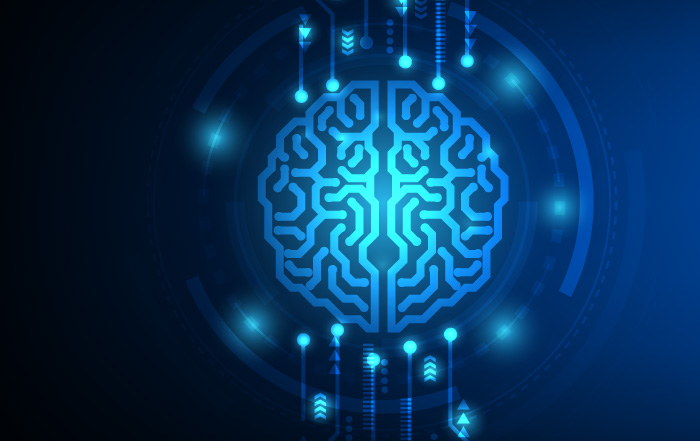
Artificial Intelligence Trends to Lookout for in 2023
Artificial Intelligence (AI) has made tremendous strides in recent years, and its impact can be seen across numerous industries and in almost every sector of society. Artificial Intelligence originated from a conference held in Dartmouth College, Hanover, New Hampshire, United States in 1956, where the term was coined by John McCarthy, Marvin Minsky, Nathaniel Rochester, and Claude Shannon. The discussion at the conference led to the idea of creating “thinking machines” that could perform tasks using human intelligence. The conference is widely considered to be the birthplace of AI as a field of study. This marked the beginning of a new field of research and development focused on creating intelligent machines. Additionally, the advent of the internet helped the technology to progress exponentially.
Artificial Intelligence technology was a stand-alone technology thirty years ago, but now the applications are widespread in every sphere of life. As we move into 2023, the field of AI continues to evolve, and new trends are emerging that will shape its future. From advancements in natural language processing to the increasing use of AI in healthcare- it’s an exciting time for AI and its potential applications. In this article, we will look at some of the key Artificial Intelligence trends to keep an eye on in 2023.
Ethical and Explainable AI
There is an increasing focus on developing AI models that can explain their decision-making process, which is important for applications such as finance and healthcare where transparency is crucial. The creation of AI models that are both ethical and transparent is critical due to the issue of trust. AI relies on data to learn, including personal information that can be highly sensitive, such as health or financial records. If the general public lacks trust in AI or an understanding of its decision-making process, they will be reluctant to provide this information. As a result, this will hinder the potential for useful and impactful AI applications.
In 2023, efforts will be made to address the “black box” problem of AI. Those responsible for implementing AI systems will strive to make their decision-making processes more transparent and explainable. In addition, the importance of AI ethics will escalate as organizations work towards eliminating bias and unfairness in their automated systems. Bias in data has been proven to result in prejudice in AI outcomes, leading to discrimination and unjust treatment. In a world where AI influences employment, justice, and healthcare decisions, this will not be tolerated.
Generative AI
Generative AI algorithms take existing data such as videos, images, sounds, or computer code, and use it to generate entirely new content that has never existed in the non-digital world. Most individuals, if asked, would likely say that AI is mainly utilized for automating tedious, repetitive tasks. However, an expanding field within AI is focused on creating tools and applications that imitate a quintessentially human skill- creativity. GPT-3, developed by Open AI, is a widely recognized generative AI model known for producing text and prose resembling human writing. Its variant, DALL-E, is used for generating images.
In 2023, we will see it used increasingly to create synthetic data that can be used by businesses for all manner of purposes. Synthetic audio and video data eliminate the requirement of capturing real-life film and speech. Instead, you can simply input the desired audio and visual content into generative AI tools, and the AI will generate it for you.
Sustainable AI
In 2023, companies will face the challenge of reducing their carbon footprint and environmental impact. The adoption and use of AI can both aid and hinder this goal. Despite the potential benefits of AI in improving energy efficiency through identifying waste and inefficiencies, the algorithms and infrastructure needed to support and deliver them, such as cloud networks and edge devices, consume large amounts of energy. In fact, a study showed that training a single deep-learning model can result in the emission of 284,000 kilograms of CO2. Efforts to adopt green and renewable energy sources for AI infrastructure are ongoing to make the technology more sustainable.
Additionally, AI can drive sustainability in various industries and operations, such as using computer vision in conjunction with satellite imagery to detect deforestation and illegal logging in rainforests, as well as illegal fishing activity that impacts biodiversity in the oceans. This year, the trend of deploying AI for solving significant environmental issues, rather than just for corporate profit, is expected to continue.
Augmented Working
This year, we will see a growing trend of integration between humans and robots in the workplace. These machines, designed to improve job performance and efficiency, may take various forms, such as smart devices providing real-time data access and analytics; AR-enabled headsets that overlay digital information on the world around us, AI-powered virtual assistants that will be able to quickly answer questions, suggest alternatives and task optimization, etc. With these advancements, workers will be better equipped to identify potential hazards and leaders will have an improved understanding of operations through real-time reporting. Developing the ability to work with and alongside intelligent, smart machines will become an increasingly indispensable work skill, consequently reducing the threat of job loss for many individuals.
Article by Michelle Nthemba
Would you like to share an article? Write to us at sbscommunication@strathmore.edu
Share This Story, Choose Your Platform!
Your journey to business excellence starts here. Subscribe today and be at the forefront of innovation and leadership.









